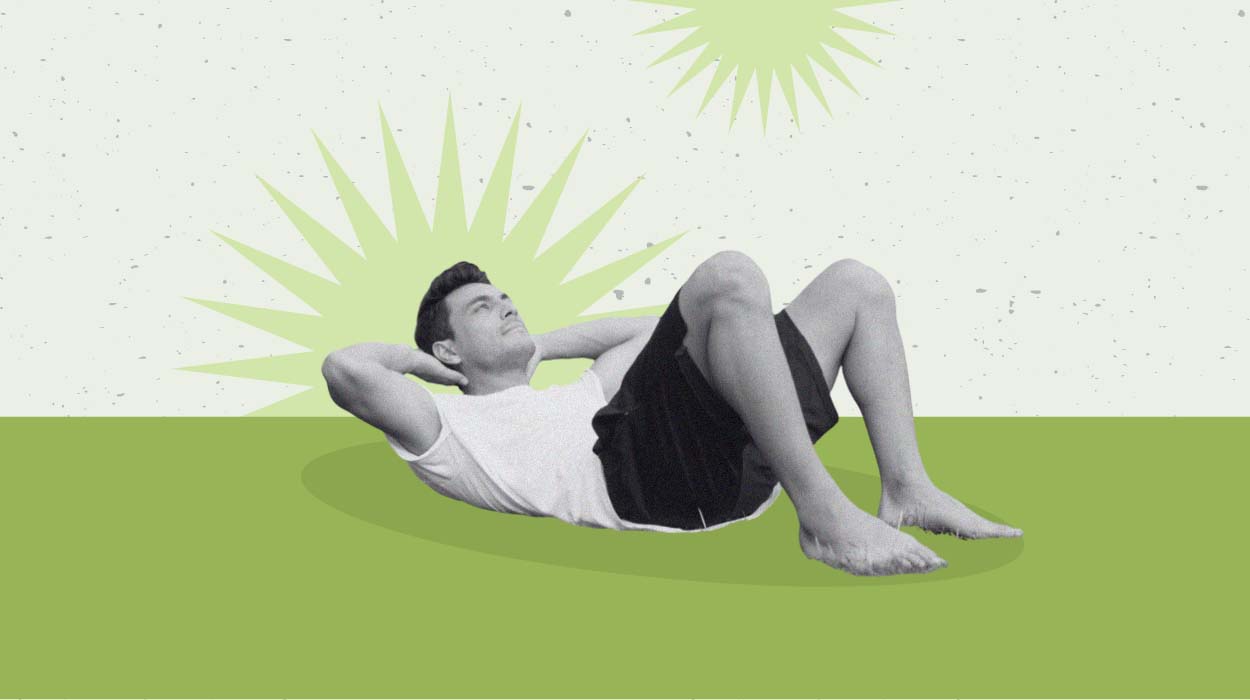
We are familiar with the benefits of exercise, and these include improved overall health and vitality. Furthermore, regular exercise sessions accompanied by supplements such as a fat burner for weight loss can also help transform our bodies to a healthier state quicker.
However, the importance of warm-ups before we exercise and cool-downs when we finish is often overlooked. A thorough warm-up session is vital for preventing injuries like muscle pulls, and taking just a few minutes extra about five to ten can aid the muscles in preparation for the main event. Not only are the muscles ready for activity, but warming up also raises your body temperature and increases blood flow overall.
While prepping your body before your exercise routine is very beneficial, adding cool-down exercises consisting of static stretches is equally important. If you want to take your recovery to another level, here are ten cool-down exercises to consider adding to your workout regime.
How To Cool Down After A Workout: Best Cool-Down Activities
How To Cool Down Muscles After Workout: Best Cooldown Exercises You Need To Try
After an intense workout, it’s crucial to transition into a cooldown phase to help your body recover and prevent muscle soreness. The following cooldown exercises are designed to enhance flexibility, release tension, and promote relaxation. Incorporate them into your post-workout routine to leave your muscles feeling refreshed and your body ready for its next challenge.
Seated Single-Leg Hamstring Stretch
Most hamstring pain comes from muscle pulls due to inadequate warm-up exercises,[1] over-excretion, and no cool-down stretching after an exercise session. In this case, the seated single-leg hamstring stretch is a great and simple exercise to execute! This cool-down exercise reduces tightness in the hamstrings and improves lower back pain as well.
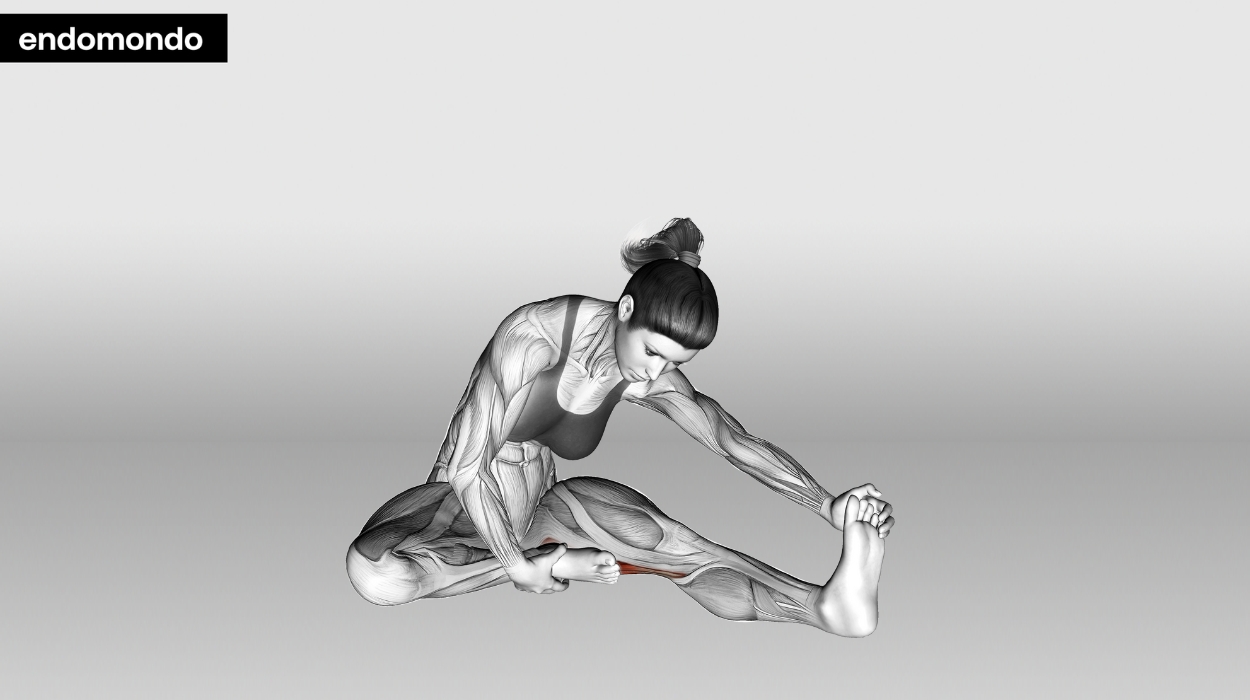
How to do:
- Sit on the floor and stretch out your right leg in front of you. Make sure to keep the leg straight, but bend the left leg until the sole of the left foot is positioned against the inner thigh of the extended leg.
- To complete the stretch, gently hinge at the hips and bend forward until you can grab the foot of the extended leg. If this is too much of a stretch, just try to reach as far as is comfortable. If you can only touch your knee but still feel a stretch in your hamstring, that’s great! Keep practicing this stretch, and you will eventually become flexible enough to reach the foot.
- Hold the position for 30 seconds and repeat a few times before switching legs when performing this stretch.
Tips:
- Maintain proper posture to maximize the stretch on your hamstring.
- Flex your toes toward your body while reaching for your extended leg’s toes to engage the hamstring more effectively.
- Avoid overstretching and maintain a comfortable stretch.
Optimal Sets and Reps: 2-3 sets of 30 seconds per leg.
Abdominal Muscle Stretch
Abdominal muscles are often overlooked, but they are used far more than expected during workouts, and it is often the case that these muscles are bypassed during warm-up and cool-down sessions.
This neglect can result in pulled abdominal muscles, and the pain and soreness usually hit 24 hours after a workout. In some cases, the sensation can be similar to that of being punched in the stomach!
A simple stretch can help to prevent stomach muscle pulls and tears.
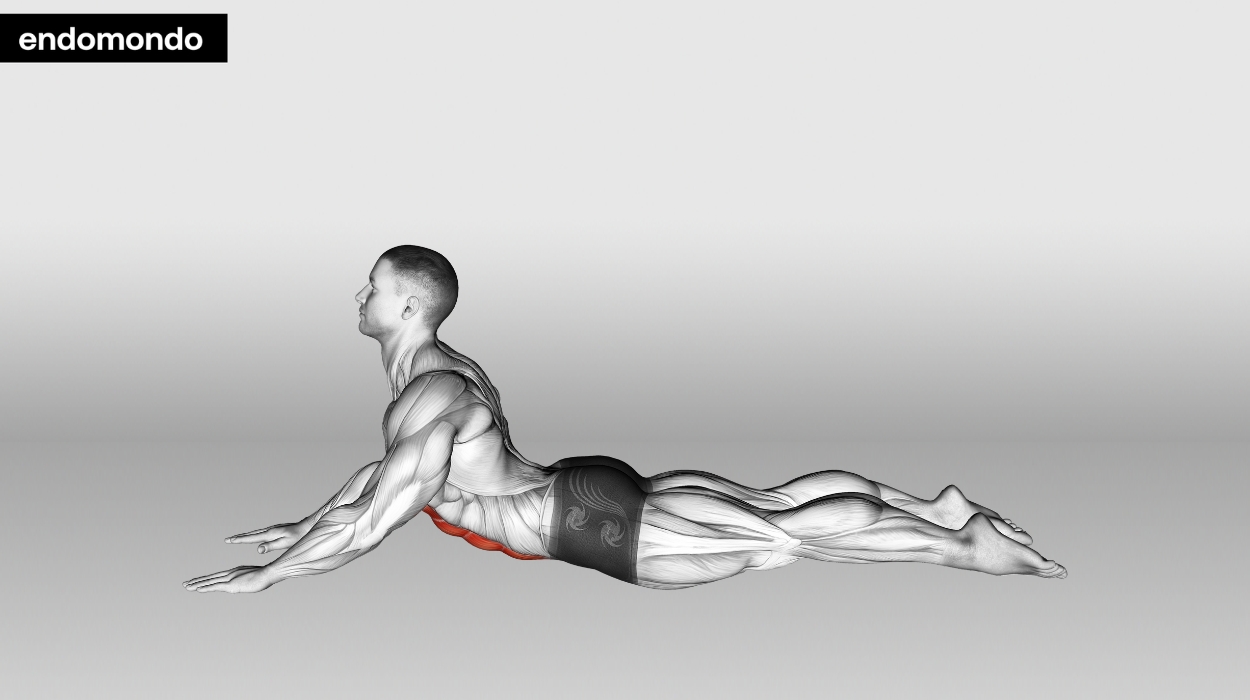
How to do:
- Set yourself up in the same position as if you were going to complete a set of press-ups. The difference here is that you must be lying face down on the floor.
- Using your arms, gently push up your upper body only while your thighs stay glued to the floor. Stretch your head and neck back so you are peering at the ceiling. If you cannot fully straighten your arms, don’t worry because this extra flexibility will develop over time.
- Slowly bend your right and left elbow as you release your chest to the floor before repeating this stretch a few times to lengthen the core.
Tips:
- Remember to keep your legs straight throughout, and make sure they remain in contact with the floor.
- Focus on pressing your belly button toward the ground while stretching.
- Maintain a steady and relaxed breath as you hold the stretch
Optimal Sets and Reps: 2-3 sets of 15-30 seconds.
Downward Dog
The downward dog is best described as forming an upside-down V-shape with your body. Holding this position has multiple benefits that include core strengthening, hamstring and calf lengthening, and improving the flexibility of the spine. The stretch will really help your body feel good!
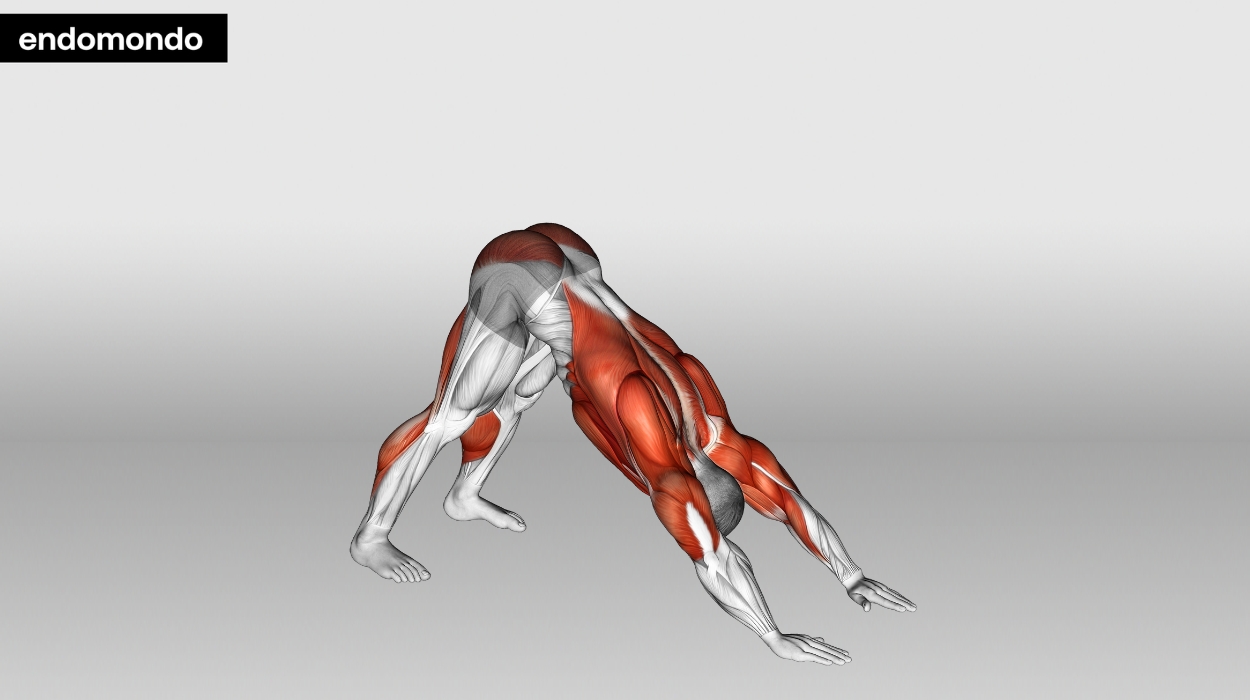
How to do:
- Get on your hands and knees with a neutral spine.
- Push against the floor, focus on bringing your shoulder blades together, and send your gluteals (glutes) back until your arms are fully extended and your legs are straight with the knees bent slightly.
- Hold this position for a minute before returning to the hands and knee position, and then repeat a few times.
Tips:
- Ensure your body forms an inverted V shape for proper alignment.
- Relax your neck, and let your head hang freely for a deep stretch along the entire backside of your body.
- Breathe deeply and calmly.
Optimal Sets and Reps: 5 sets of 1 minute each.
Cat And Cow
Cats are always stretching, but cows are not so much. Despite this, the cow has managed to get a stretch named after it! The cat and cow stretch helps improve spinal flexibility and relieve tension in your back muscles after a workout.
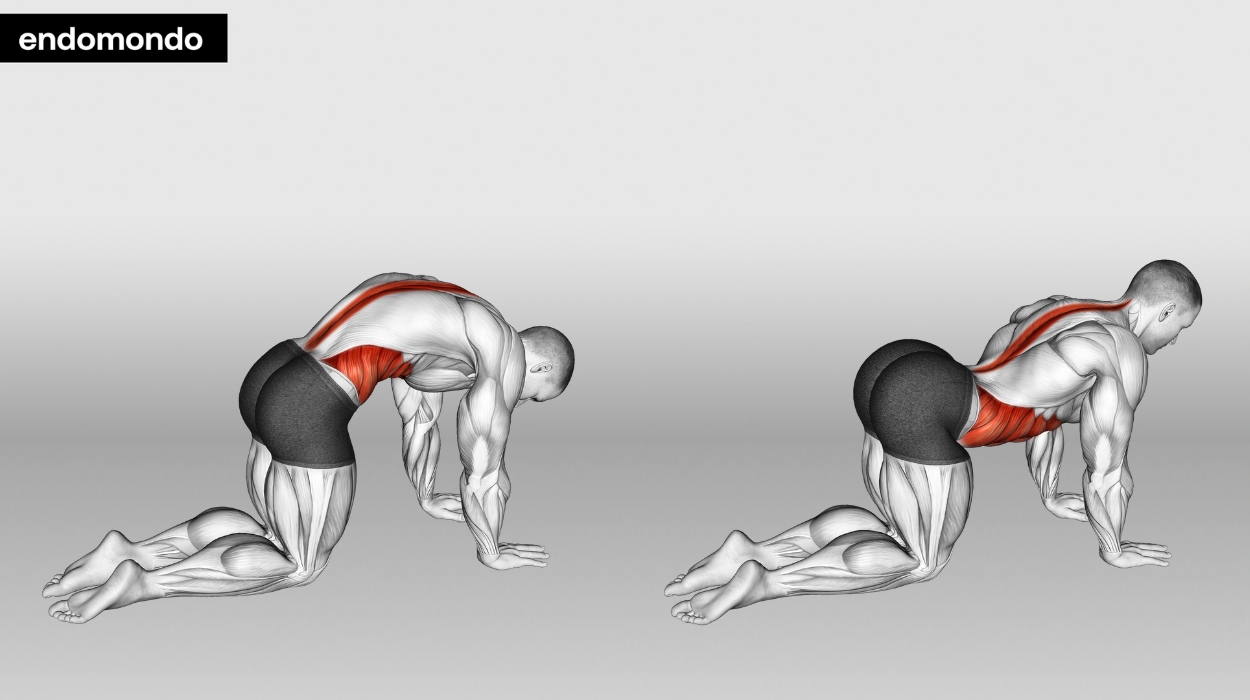
How to do:
- Get on all fours, like a cat or cow.
- Inhale deeply and round your back. Imagine pulling your belly button into your spine while tucking your chin into your chest. Hold the position for ten seconds before releasing it into the cow position.
- The cow is similar, but this time you will gaze up as you sink your belly to produce a slight downward curve in your back. Hold for another ten seconds, and then transition back into the cat position.
Tips:
- Keep your wrists aligned under your shoulders, your knees under your hips, and your fingers spread wide for stability.
- Focus on the fluidity of the movement from the cat to the cow pose.
- Coordinate your breath with the movement – exhale during the cat pose and inhale during the cow pose.
Optimal Sets and Reps: 5 sets of 10-15 reps, alternating between the cat and cow pose.
Kneeling Shin Quad Stretch
If you are after a simple and effective exercise, then look no further than the kneeling shin quad stretch. This exercise relieves tension in your quadriceps muscles and enhances flexibility after your workout.
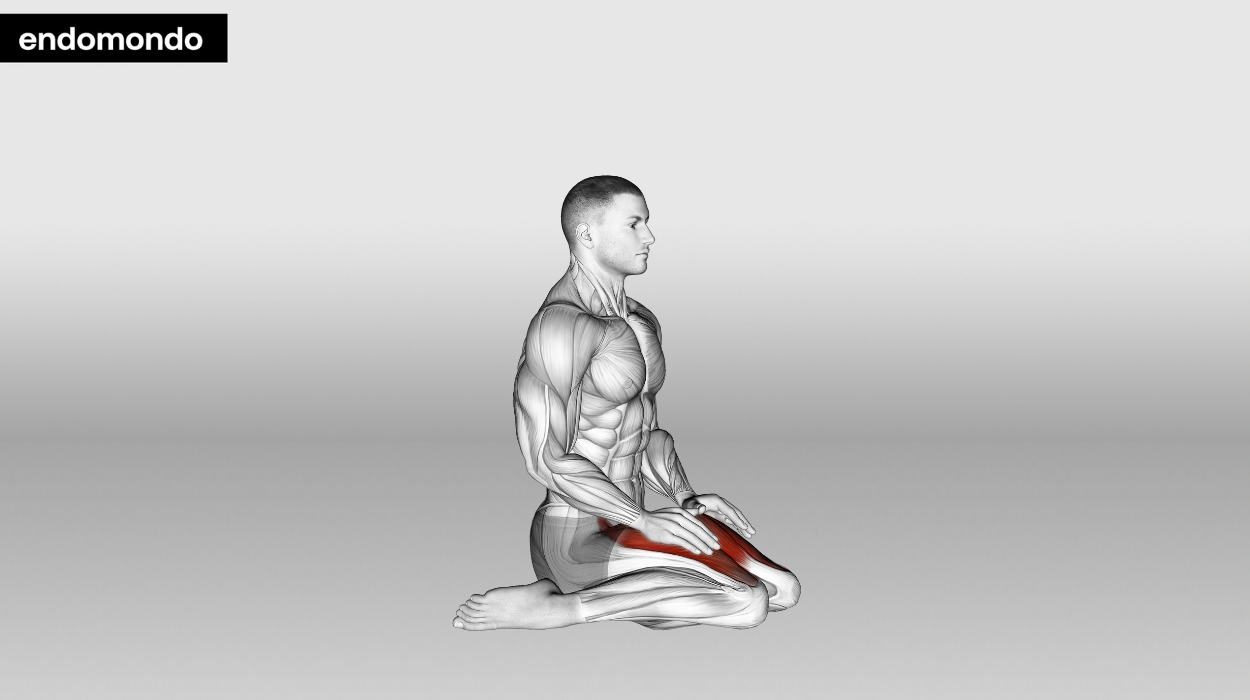
How to do:
- Get into a kneeling position with the tops of your feet on the ground.
- Slowly bring your glutes down to sit on your feet for 15 seconds. Hold your arms forward to help with balance
- Slowly return to the starting position before repeating the stretch.
Tips:
- Begin in a kneeling position with your toes pointing behind you for proper alignment.
- Ensure that your knees stay close together during the stretch to maximize the focus on the quadriceps muscle.
- Keep your upper body upright, avoiding any leaning or tilting forward. This helps to target the quads effectively.
Optimal Sets and Reps: Hold for 15 seconds per leg, repeating 2-3 times per leg.
Knee-To-Chest Stretch
The knee-to-chest stretch helps keep the lower back supple and free of pain.
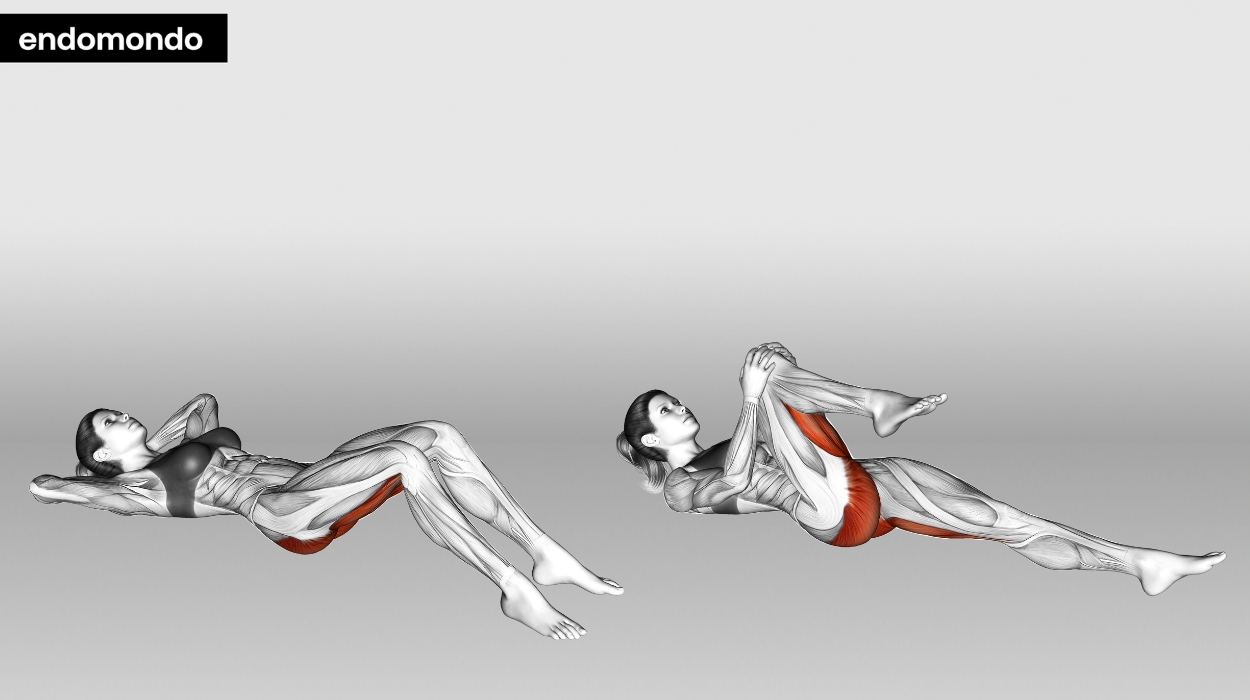
How to do:
- Lie on your back with your legs bent at the knees.
- Gently bend the knee of one leg more, and use both arms to pull the bent knee towards your stomach and chest.
- Hold the position briefly and then release.
Tips:
- Focus on deep and controlled breathing.
- Keep your head and shoulders relaxed on the ground.
- Apply a gentle, steady pull and avoid any excessive force or discomfort.
Optimal Sets and Reps: 2-3 sets of 15-20 seconds per leg, alternating between legs.
Bent Knee Cross-Body Stretch
The bent knee cross-body stretch is similar to the knee-to-chest stretch but with an added twist. This stretch helps ease tension in your lower back, improve hip flexibility, and enhance overall relaxation after your workout.
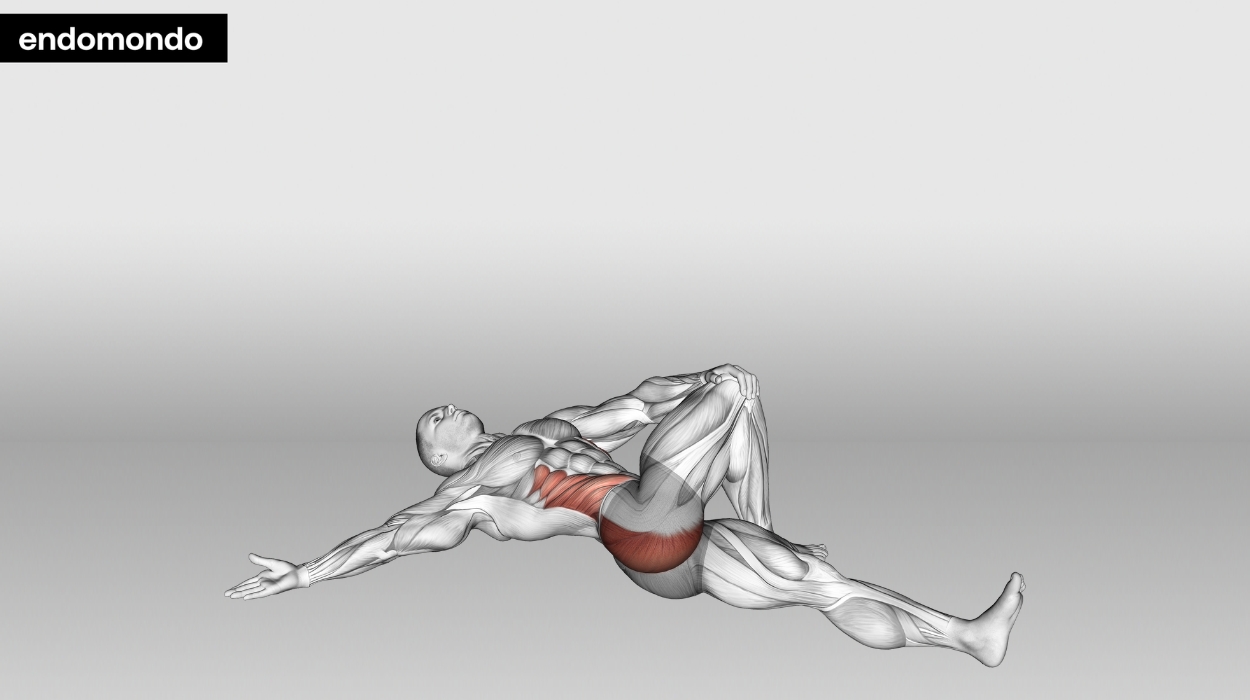
How to do:
- Get into the same position as the knee-to-chest stretch.
- Pull the knee to one side, the left arm pulls the right knee, and the right arm pulls the left knee. This allows your obliques to lengthen, and each cross-body stretch should be held for 30 seconds. Feel free to repeat this motion on each side.
Tips:
- Extend your arms straight out to the sides at shoulder level.
- Use your hand to assist in guiding the knee if necessary.
- As you hold the stretch, focus on deep, controlled breaths and allow your body to relax into the stretch.
Optimal Sets and Reps: 2-3 sets of 30 seconds per side, alternating sides.
Seated Pigeon
Do you think you can be seated and still be effectively performing cool-down stretches? The seated pigeon stretch shows that you can! This simple stretch is great for your glutes, hip flexors, and lower back.
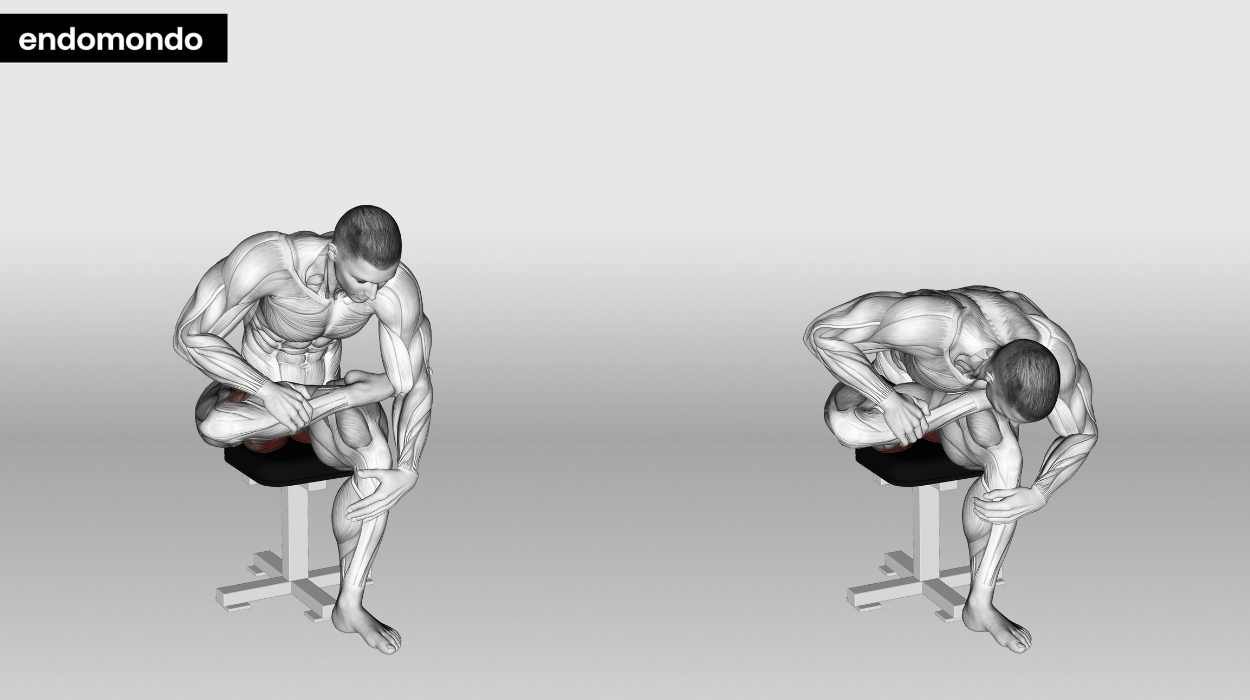
How to do:
- Sit comfortably on a chair with your back straight and feet flat on the floor.
- Cross your right ankle over your left knee, creating a figure-four shape with your legs.
- Gently press down on your right knee to feel a stretch in your right hip and glute.
- Hold the stretch for 15-20 seconds while maintaining good posture.
- Release and switch sides, crossing your left ankle over your right knee to repeat the stretch.
Tips:
- Create a “figure-four” shape with your legs when sitting.
- Keeping your back straight, gently lean forward from your hips to feel a deep stretch in the outer hip of the bent leg.
- Take deep, relaxing breaths as you hold the stretch
Optimal Sets and Reps: 2-3 sets of 15-20 seconds per leg, alternating between legs.
Lower Back Rotational Stretch
Lower back pain is extremely common after a workout and can result from many things, whether it be from lifting weights that are too heavy or turning your body too quickly. However, back pain can also come down to inadequate warm-ups and cool-downs. This is why the lower back rotational stretch is a valuable addition to your cool-down routine!
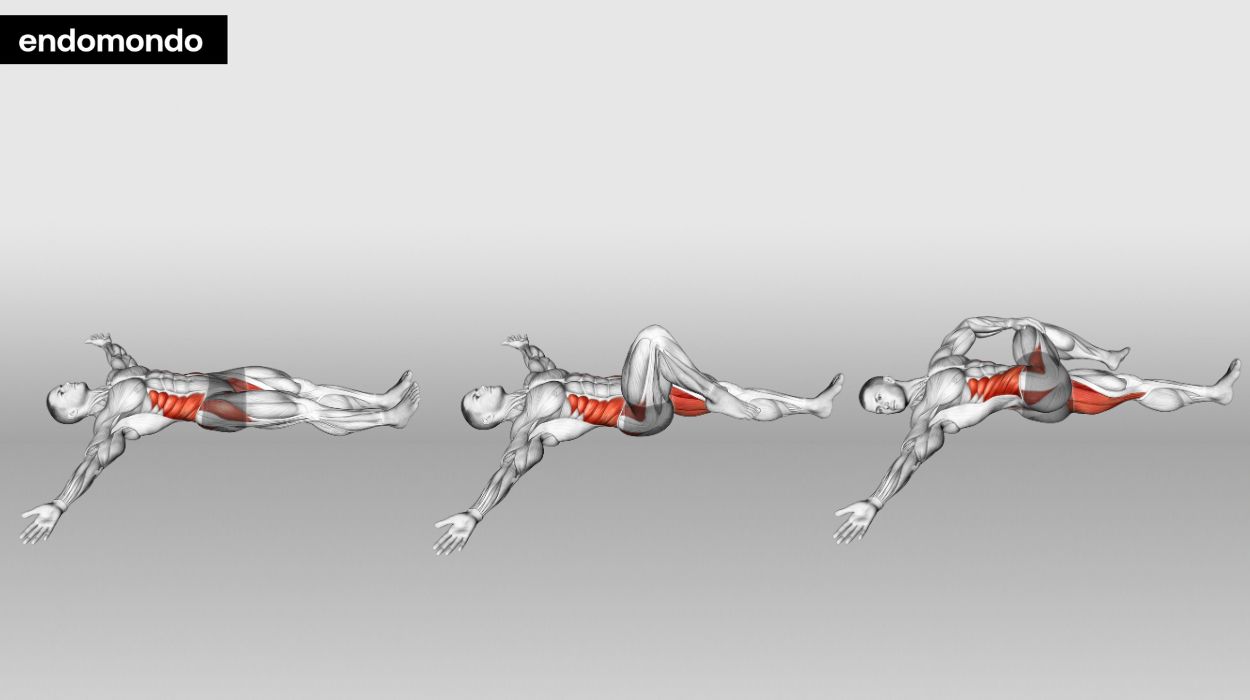
How to do:
- To begin, lie on your back with your arms spread upwards. Your shoulders and arms should be glued to the floor.
- Look up at the ceiling and gently pull your knees up while keeping your feet flat on the floor.
- Next, rotate your feet, legs, and hips as far to the right as you can. Hold the position for 30 seconds before returning to a neutral position.
- Repeat in the opposite direction. Don’t forget to keep your feet hip-distance apart. With this cool-down, you can do as many reps as you like.
Tips:
- Use your hand to guide your knees for a deeper stretch and maintain a slow and controlled movement.
- Allow your lower back and hips to release tension gradually.
- Focus on deep, relaxed breathing to enhance the stretch’s effectiveness and promote relaxation.
Optimal Sets and Reps: 2-3 sets of 15-20 seconds per side, alternating sides.
Lunge Stretch
Incorporating the lunge stretch into your cooldown routine improves hip flexibility, relieves tension in your quadriceps and hip flexors, and enhances overall lower body mobility after your workout.
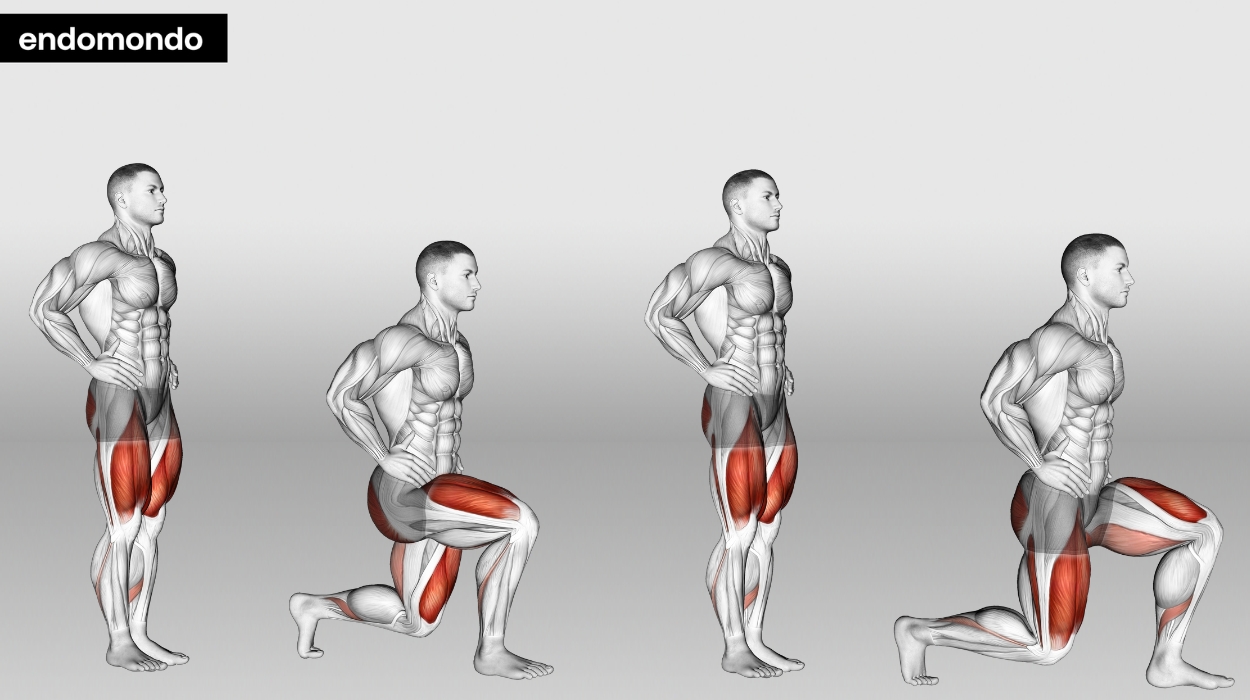
How to do:
- Start in a standing position with your hands on your hips before stepping your right foot out into a forward lunge during this stretch.
- Have your forward leg bent at the knee while your back leg lies naturally.
- Keep your back straight and chest up as you push forward on the leading leg until you feel a satisfying stretch. Hold for 30 seconds before switching to the left side.
Tips:
- Ensure your front knee is directly above your ankle, and your back heel is lifted.
- Keep your upper body upright and engage your core.
- Take deep breaths and focus on relaxing into the stretch.
Optimal Sets and Reps: 2-3 sets of 30 seconds per leg, alternating between legs.
Why Are Cooldown Exercises Important?
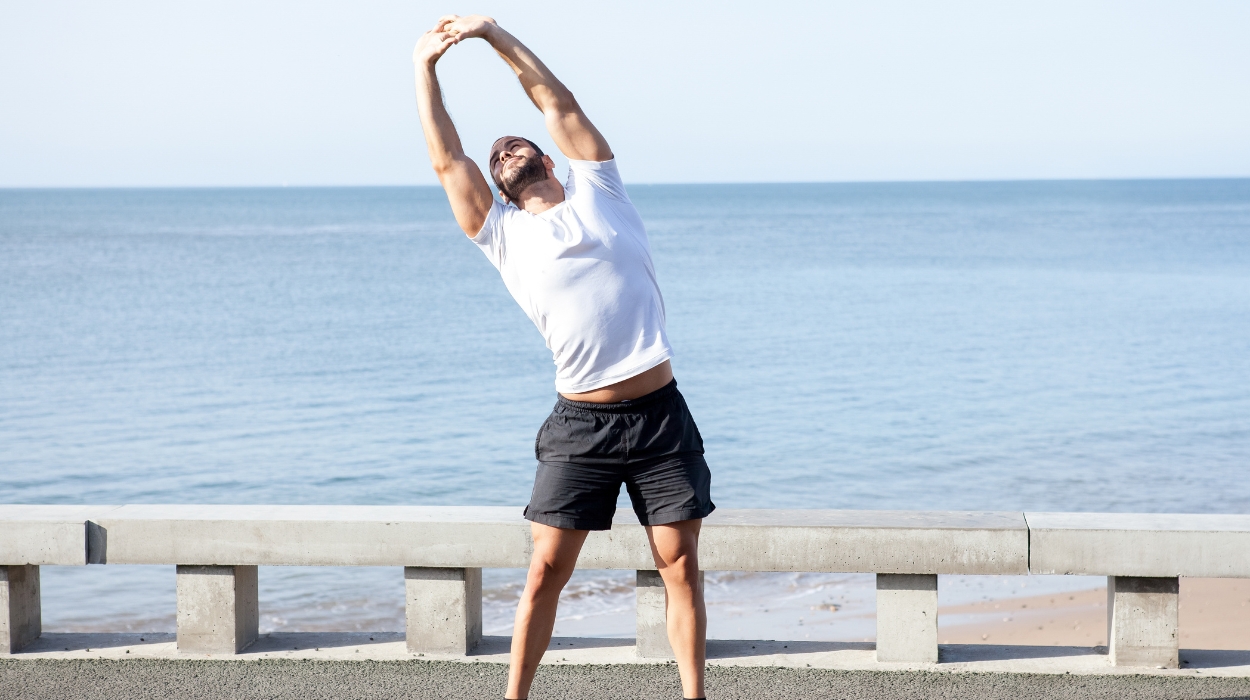
Cooling down should be as important as warming up because it slowly lowers the heart rate and blood pressure to pre-workout levels. After a gym session, gentle stretching of the muscles can also help speed recovery and reduce muscle soreness. Having a regular cool-down workout routine in place will ensure that your muscles stay flexible and limber for years to come.
Final Thought
Cooling down exercises are all about avoiding injury, muscle soreness, and tightness, and these simple exercises help the body wind down after a workout. Furthermore, they aid muscles in recovering quickly.
Yoga poses can also be used as beneficial cool-down stretches. In fact, you can cool down with yoga instead, and the child’s pose is one of the most popular moves! However, no matter how you choose to cool down, warm-ups and cool-downs are vital to the success of a fitness regime.
Resources
- McGowan, C., Pyne, D.B., Thompson, K.G. and Rattray, B. (2015). Warm-Up Strategies for Sport and Exercise: Mechanisms and Applications. Sports Medicine, [online] 45(11), pp.1523–1546. doi:https://doi.org/10.1007/s40279-015-0376-x.




